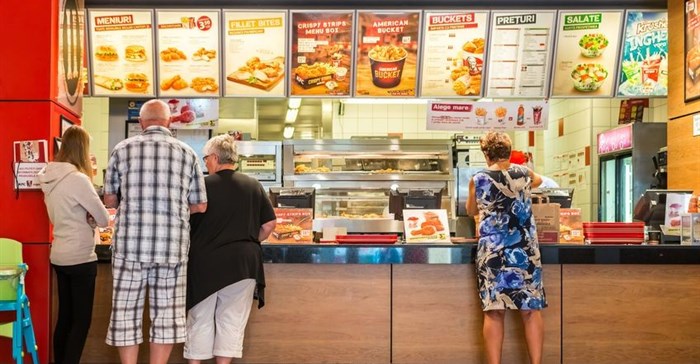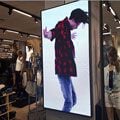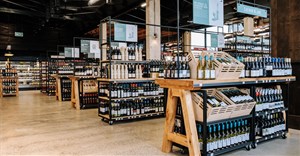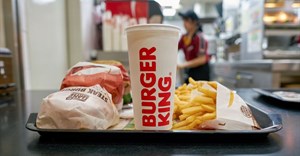The digital transformation of menu boards

In recent years, menu offerings have shifted to healthier and fresher options and the need for smaller-bite size on-the-go solutions, that are affordable tummy fillers. In tandem with this has been how the options are visually displayed and communicated on the menu boards.
Digital experience expectations
“As tech has become increasingly advanced, menu boards have changed significantly and many QSR brands have already shifted to using the digital option,“ comments Andrew Ridl, CEO of One Digital Media (ODM). “The days of the static, bulky, backlit menu boards are numbered as they are continually replaced with high definition images, animations and videos on LED SOC (system on chip) screens.
“Some brands are even incorporating touch-screen ordering points to enhance the speed of service and the overall customer experience,” says Ridl. “Initially this was a novelty and only pilot stores were experimenting with touch-screen self-service terminals – now these are the norm in most first world countries. For example, take Shake Shack in Manhattan who are using technological innovation to dominate the better-burger segment, by focussing on the customer experience and reducing the time spent to order and receive a fantastic meal.”
“Today’s customers already incorporate technology into all aspects of their lives from mobile phones and tablets, to flat-screen TVs and voice-activated home assistants. Consumers have come to expect a digital experience, and the last thing a restaurant operator wants to do is create the impression that their business is old, tired and living in the past.”
Brand messaging
Ridl highlights the fact that a digital menu board offers the opportunity to deliver a brand’s message in new and exciting ways and emphasises the different uses. “Static boards are there to simply display menu items while digital menus are there to tell a story and enhance the overall design of a restaurant. In addition, digital menu boards help customers make decisions faster and more accurately, while reducing order and wait times.”
Most restaurant chains require a quick response time for the content changes carried on the menu boards to occur, especially when it pertains to aspects involving price, promotions, seasonal products and specials. The process of updating printed or backlit menus is much slower and more expensive than with a digital format. For example, instead of the menu boards being sent to print, then being delivered to each store, and then being put up, they can now simply be uploaded directly to the stores nationwide from one central point. By eliminating both print and delivery costs, large savings in marketing funds and time occurs in the long run.
Recently there has also been a shift from using multiple screens that show as much content as possible, to using fewer screens with more strategic and impactful animated content. “Not only is this more cost-effective for the brand but is also less overwhelming for the customer,” comments Ridl. The time has come to use fewer screens with targeted content so that a specific product can be pushed to customers more effectively.
How the content and messages are delivered to the customer is almost endless nowadays and varies between the use of words, images, animated graphics, videos and the like. Dynamic or interactive content can even help entertain customers while they wait, and more and more brands are working towards offering a unique experience for their customers.
A study by AT Kearney Omnichannel shopping preference, confirms that ‘real-time retailing’ is the digital buzzword and 74% of customers say that the ease of reading a menu is top priority in their shopping experience. The study also confirms that technology is a crucial part of the customer’s buying experience and as a result of the instore digital interaction, retailers enjoy 46% in customer satisfaction and 32.8% in repeat buyers.
Upselling opportunities
Digital menus also provide an enormous opportunity when it comes to upselling. It’s no longer necessary to ask a customer, ”would you like a drink?” or “would you like a meal?” because now it all appears right in front of them. Also, with the high definition displays available, the items look more enticing and appetising, which further prompts a positive purchase decision.
A case in point occurred in 2010 when Burger King deployed digital menu boards across London and Birmingham locations, which resulted in a 64% increase in sales in just 12 months. Based on this success, when Burger King launched their global new store concept called 20/20, which was first trialled in Mexico in 2016, the modern industrial store design switched all menus to digital menu boards elevating the overall customer experience.
Digital menu board benefits
Proving that digital done right with menu boards can be extremely effective, Ridl highlight the following benefits:
• Can increase the visual influence of the menu and create appetite appeal.
• Allows brands to strategically push a certain product by having it pop up continuously or making it larger than the other menu items.
• Out of stock items can immediately be removed to avoid customer irritation and disappointment before the customer ’s selection time.
• Products that are only served at specific times of the day i.e. breakfast, lunch and dinner can be set to automatically change throughout the operating hours. For example, Starbucks (who owns the breakfast market in Chicago) recently announced that they are using digital menu boards to boost their afternoon trade.
• Digital can assist with upsizing and upselling suggestions that will increase the average transaction value which is a priority for all QSR operators.
“Today’s content options are endless. For example, coffee can be displayed more prominently if temperatures plummet, or small easy-to-eat meals can be highlighted during the week when short lunch sessions are necessary for a business clientele, and on weekends families can be the focus with value share deals,” concludes Ridl.


















